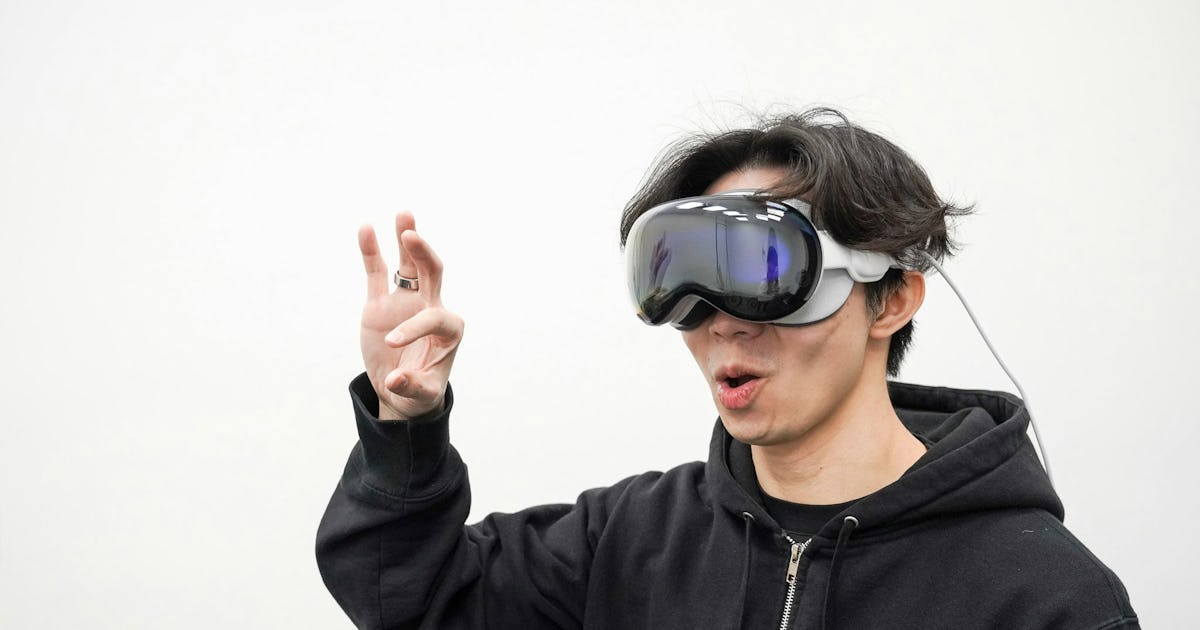Apple's Social Force Ghost Feature

One of the strangest things to date about using the Vision Pro has been how it's almost the opposite of what Apple has been hyping up. That is, it's the most isolating version of computing yet. Sure, EyeSight – your eyes sort of ethereally shown to someone who walks into a room when you're using the device – is a nice idea in practice. In reality, it's just wrong. Personas – the digital representation of your real face – is more promising, but was comically bad to start. So much so that Apple used the decidedly Google-esque "beta" moniker, which they rarely do. An update to visionOS 1.1 fixed the Personas slightly. But my wife still laughed when I called her on FaceTime. It's just not a good experience for anyone: the user or the receiver. Anyway, Apple is still pushing ahead here. Today, in the latest visionOS beta, we get "Spatial Persona". It's sort of Force Ghost-y. Raymond Wong got an early walkthrough:1
Spatial Persona, which was announced in a developer session post-WWDC keynote last June, is Vision Pro’s answer to its isolating, single-person experience. With spatial Persona, up to five people using their own Vision Pros can participate together within compatible apps without being in the same physical space. In the VR/Meta Quest world, this virtual collaboration is commonly called “presence,” or the ability to feel like a bunch of people are all hanging out together in a virtual space.
Yesterday, Apple invited me to try out a demo of spatial Persona — from the comfort of my own home — with several of its PR reps. The addition to visionOS is part of the still-in-beta Persona experience, meaning it’s still a work in progress. But even with a few connection issues during my demo, it was a glimpse of how Vision Pro could bring people together to watch movies, play games, or collaborate on work.
Here's what it's like:
After accepting a FaceTime call from Apple’s PR team, I was greeted by two Persona faces inside of their respective 2D FaceTime square “tile” windows. A quick tap in Control Center, however, pulled them out of their tiles and into my living room. The two people weren’t actually standing in my living room, and they couldn’t see my messy apartment either, but their heads, hands, and the upper part of their torso floated in my room as if they were standing in front of me on the left and right. They could move around in their physical space to position themselves closer or farther away from me or each other, and I could too. If you try to walk through another Persona, they turn into a circle-shaped contact card (and they or anyone else will see you doing it). You could be that person and annoy everyone, but it goes without saying that you should respect each other’s personal space, even if it’s virtual.
The three of us could sit down or stand up, and just like in real life, our eye levels would match accordingly. On a phone, tablet, or laptop/desktop, we’re used to not making eye contact on a video call because the webcam is often positioned above the screen. (iOS and iPadOS do have a nifty hidden “Eye Contact” feature that remaps your eyes to appear as if you’re looking into the camera as opposed to at the screen.) So it was more natural to look directly into their eyes and maintain contact; it felt more real, more intimate.
And:
In addition to realistic eye contact, spatial Personas are also directional. That means if several Personas are hanging out together in visionOS, you can see where they are relative to your position. For example, if I point to a Persona on my left with my left hand, everyone else will see that, and the person I’m pointing at will see that I am pointing at them from their right side. It’s basic presence 101 stuff and Apple nails it, even in beta.
Similarly, just like when you’re making a FaceTime call with people (either in 2D or a Persona) in Vision Pro in their tiles, audio is directional (or spatial Apple calls it) as well. Everyone will hear each other’s voices relative to where they are positioned in virtual space.
The type of clever stuff I would expect Apple to nail. Look, this sounds promising. I suspect it's one of those things you have to experience to truly be able to tell, but it's at least directionally correct for what Apple has been trying to do with the Vision Pro. The main issue, of course, is that you need to know other people with the $3,500 device. That's probably fairly easy for tech reporters. For "regular" folks, it must be nearly impossible at this point. Also, to use this with your family would require you to purchase multiple $3,500 headsets. I think Apple (wisely) is positioning this more for remote contacts rather than those in close proximity. Where, you know, you could just actually be in each others' presence.
Anyway, baby steps. It's good to see Apple release this ahead of WWDC in a couple months. That would seem to indicate there's a lot more to come and speak about with regard to visionOS. I want more content, content, content – better than this – but these types of updates are crucial for any hopes of "viral" adoption of this device.
1 To beat the dead horse in what sounds like a bad gag but is truly true, I also thought this was an April Fools joke at first.

